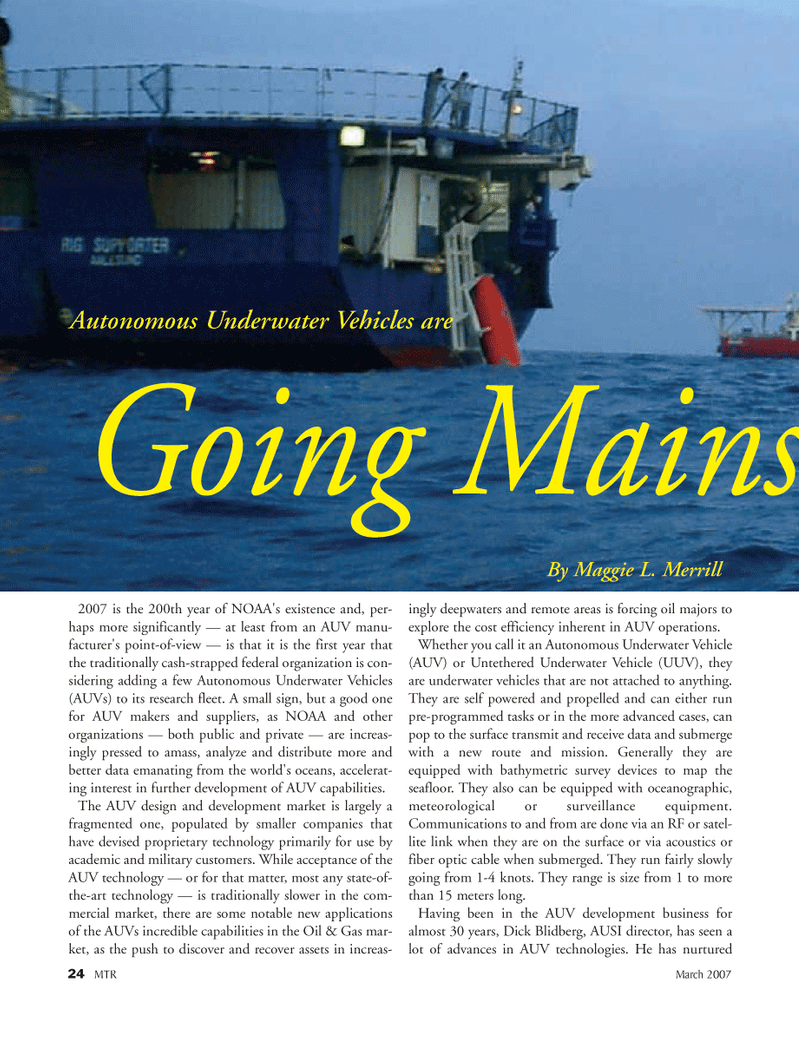
Page 24: of Marine Technology Magazine (March 2007)
AUVs, ROVs, UUVs
Read this page in Pdf, Flash or Html5 edition of March 2007 Marine Technology Magazine
2007 is the 200th year of NOAA's existence and, per- haps more significantly — at least from an AUV manu- facturer's point-of-view — is that it is the first year that the traditionally cash-strapped federal organization is con- sidering adding a few Autonomous Underwater Vehicles (AUVs) to its research fleet. A small sign, but a good one for AUV makers and suppliers, as NOAA and other organizations — both public and private — are increas- ingly pressed to amass, analyze and distribute more and better data emanating from the world's oceans, accelerat- ing interest in further development of AUV capabilities.
The AUV design and development market is largely a fragmented one, populated by smaller companies that have devised proprietary technology primarily for use by academic and military customers. While acceptance of the
AUV technology — or for that matter, most any state-of- the-art technology — is traditionally slower in the com- mercial market, there are some notable new applications of the AUVs incredible capabilities in the Oil & Gas mar- ket, as the push to discover and recover assets in increas- ingly deepwaters and remote areas is forcing oil majors to explore the cost efficiency inherent in AUV operations.
Whether you call it an Autonomous Underwater Vehicle (AUV) or Untethered Underwater Vehicle (UUV), they are underwater vehicles that are not attached to anything.
They are self powered and propelled and can either run pre-programmed tasks or in the more advanced cases, can pop to the surface transmit and receive data and submerge with a new route and mission. Generally they are equipped with bathymetric survey devices to map the seafloor. They also can be equipped with oceanographic, meteorological or surveillance equipment.
Communications to and from are done via an RF or satel- lite link when they are on the surface or via acoustics or fiber optic cable when submerged. They run fairly slowly going from 1-4 knots. They range is size from 1 to more than 15 meters long.
Having been in the AUV development business for almost 30 years, Dick Blidberg, AUSI director, has seen a lot of advances in AUV technologies. He has nurtured 24 MTR March 2007
Autonomous Underwater Vehicles are
Going Mainst
By Maggie L. Merrill
MTR#2 (17-32).qxd 3/2/2007 11:06 AM Page 24

 23
23

 25
25
